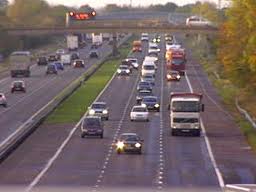Imagine sitting in your car on the motorway at 70 miles an hour. You’re in the driver’s seat, but your hands are off the wheel, you are drinking a cup of coffee and studying those important notes for the meeting you’re heading to 100 miles away.
Do you want to reread that? Your hands are off the steering wheel. In fact, you’re not driving the car at all.
If you think the idea is fanciful, and futuristic in a Flash Gordon sort of way, realise this: the concept has already been successfully tested, and it could be available as a transport option in the not so distant future.
This is “vehicle platooning”. Volvo, part of the SARTRE project, recently showed that the idea works on a test track at the Volvo Proving Ground , Gothenburg, Sweden.
The idea is that a convoy of vehicles drives up the motorway. A professional driver in a lead car heads up a line of other vehicls. Sensors in each car measure the distance and direction, and adjust to the vehicle in front. Cars are totally detached, and can leave the procession at any time. But once in the platoon, drivers can relax and do other things while the platoon proceeds towards its destination.
The Swedish tests involved a lead vehicle and single following car. The steering wheel of the following car moved by itself as the vehicle followed the lead truck around the country road test track. The driver was able to drink coffee and read a paper, using neither hand nor foot to operate his vehicle.
Among the improvements “platooning” is designed to bring are:
Road safety – it minimises the human factor (and driver fatigue), the cause of around 80 percent of road accidents.
Fuel saving – it could cut CO2 emissions by up to 20 percent.
Platooning allows the driver to do other, and productive, things; and because vehicles would travel at highway speed with only a few meters gap, it may also relieve traffic congestion.
A press release from Volvo said the technology development was well underway, and it could go into production in a few years. What may take substantially longer are public acceptance and legislation. Winning acceptance across 25 EU governments will be a big challenge.
Realistically it would probably work first on motorways, where drivers travel long distances, and there aren’t many junctions to confuse and irritate other drivers. It’s hard to see how it would work on A roads, as they operate today, with lots of junctions and roundabouts. But by the time it is applied to lesser roads, car technology is likely to have changed enormously; our vehicles will be far more automated, and engineered for safety. This should make integrating with platoons a lot easier.
The SARTRE (Safe Road Trains for the Environment) project started in September 2009 and runs for three years (www.SARTRE-project.eu) . The programme, intended to “facilitate the safe adoption of road trains on un-modified public highways with full interaction with non-platoon vehicles” is part funded by the European Commission.
SARTRE is led by Ricardo UK Ltd , with collaboration between Idiada and Robotiker-Tecnalia of Spain, Institut für Kraftfahrwesen Aachen (IKA) of Germany, and SP Technical Research Institute of Sweden, Volvo Car Corporation and Volvo Technology of Sweden.
“This is a major milestone for this important European research programme,” says Tom Robinson, SARTRE project coordinator, of Ricardo UK Ltd. “Platooning offers the prospect of improved road safety, better road space utilisation, improved driver comfort on long journeys and reduced fuel consumption and hence CO2 emissions. With the combined skills of its participating companies, SARTRE is making tangible progress towards the realisation of safe and effective road train technology”.

